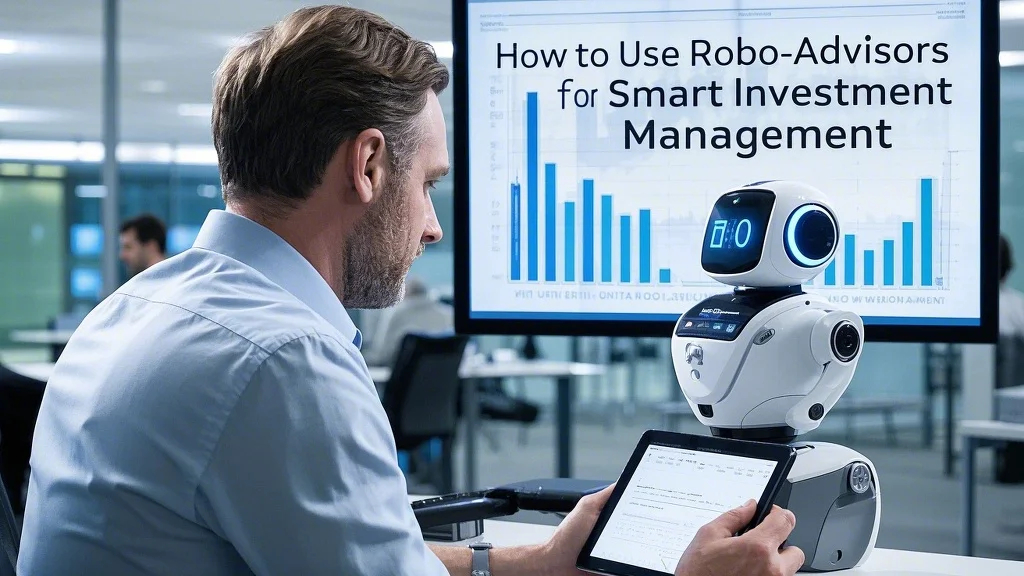The Rise of Automated Investment Management
Modern robo-advisors have transformed from simple algorithmic tools into sophisticated platforms that rival traditional financial advisors. These digital solutions combine advanced algorithms with user-friendly interfaces to create personalized investment strategies at a fraction of the cost of human advisors. The latest generation of wealth management technology goes beyond basic portfolio construction to offer features like tax-loss harvesting, automatic rebalancing, and even socially responsible investing options. What began as a solution for beginner investors now attracts high-net-worth individuals seeking efficient, data-driven portfolio management. The best platforms continuously learn from market trends and user behavior to refine their recommendations, making them increasingly effective for long-term wealth building. This evolution represents a fundamental shift in how Americans approach investing, particularly among younger generations who prefer digital-first financial solutions.
Getting Started with Robo-Advisor Platforms
Beginning your journey with robo-advisors requires understanding how these smart investment tools assess your financial situation. Most platforms start with a detailed questionnaire that evaluates your risk tolerance, time horizon, and financial goals. The sophistication of these assessments has grown significantly, with some now incorporating behavioral finance principles to identify your true risk appetite beyond what you might self-report. After analyzing your inputs, the algorithm recommends an asset allocation typically composed of low-cost ETFs across various market segments. Many platforms now offer additional customization options, allowing you to exclude specific sectors or overweight others according to your preferences. The account setup process is remarkably streamlined, often taking less than 15 minutes from start to finish, with some platforms even offering instant account funding options via bank connections.

Advanced Features for Sophisticated Investors
Today’s leading wealth management technology offers features that go far beyond basic automated investing. Tax optimization tools have become particularly advanced, with some platforms performing daily scans for tax-loss harvesting opportunities across thousands of client portfolios. Direct indexing allows investors to own the individual stocks comprising an index while benefiting from personalized tax management. Many robo-advisors now provide cash management solutions with competitive interest rates and FDIC insurance, creating seamless transitions between spending and investing. For socially conscious investors, platforms offer increasingly granular ESG (Environmental, Social, and Governance) screening options. Some services have introduced “goal-based investing” features that align specific investments with particular life objectives like buying a home or funding education. These advanced capabilities make modern robo-advisors suitable for investors at nearly all wealth levels and with diverse financial priorities.
Integrating Robo-Advisors with Human Advice
The most effective fintech for investors combines algorithmic efficiency with human expertise through hybrid models. Many platforms now offer tiered services where clients can access certified financial planners for major life transitions or complex financial decisions. These hybrid robo-advisors typically charge lower fees than traditional advisors while providing most of the same services. Some innovative platforms use AI to determine when human intervention might be beneficial, automatically scheduling consultations for situations like inheritance receipt or business sale proceeds. The integration often extends to estate planning, with some services coordinating with attorneys to ensure investment accounts align with trust structures. This blended approach works particularly well for investors who want the cost efficiency of automation but appreciate human guidance for emotionally charged decisions or multifaceted financial situations.
Comparing Robo-Advisor Performance and Fees
Not all smart investment tools are created equal, and understanding fee structures is crucial for maximizing returns. Most robo-advisors charge between 0.15% and 0.50% of assets under management annually, significantly less than the 1% standard for human advisors. However, the underlying ETF expenses can add another 0.05% to 0.25% to your total costs. Some platforms have introduced flat-fee models that become more cost-effective as your portfolio grows. Performance comparison is challenging because portfolios differ based on individual risk profiles, but many platforms now publish transparent performance data for their model portfolios. The most sophisticated fintech for investors provides detailed reporting that shows your personal rate of return net of all fees, making it easier to evaluate whether the service is delivering value. When comparing platforms, consider both the quantitative factors like fees and performance as well as qualitative aspects like user experience and customer service responsiveness.
Future Trends in Automated Investment Management
The next generation of wealth management technology promises even more personalized and proactive investment solutions. Emerging platforms are experimenting with predictive analytics that can anticipate life events and adjust investment strategies accordingly. Some robo-advisors are beginning to incorporate alternative investments like private equity, real estate, and cryptocurrencies into traditional portfolios. Artificial intelligence is enabling more natural language interactions, allowing investors to ask complex questions and receive detailed portfolio analyses in plain English. The most innovative services are developing “set it and forget it” features that automatically adjust risk levels as target dates approach or personal circumstances change. As regulation evolves, we may see platforms that can execute more comprehensive financial planning functions traditionally reserved for human advisors. These advancements will likely make automated investing tools indispensable for investors at all levels in the coming years.



